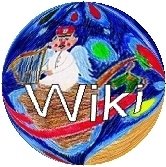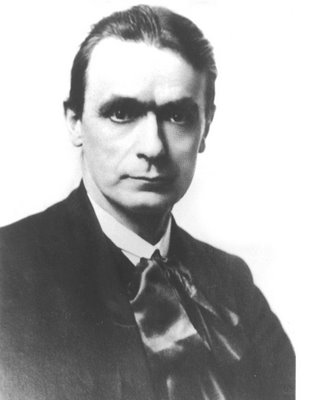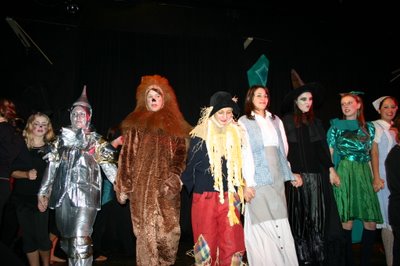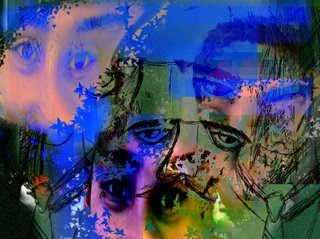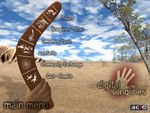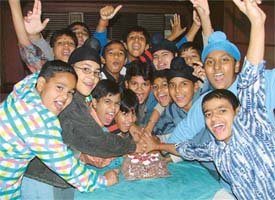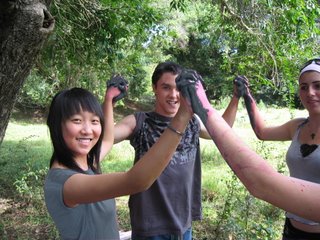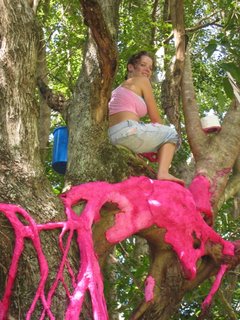 A JOURNEY INTO CONSTRUCTIVISM
A JOURNEY INTO CONSTRUCTIVISMI came across this essay whilst trowelling the internet for articles of interest in relation to the subject of Constructivism. In the process of reading this article I was able to reflect on the processes of applying constructivism in my own teaching practice, and was surprised that so many questions came to mind. In that way I think this article has been very useful and has inspired me to construct yet another perspective on constructivism. As we all know, formalization of the theory of constructivism is generally attributed to Jean Piaget, who articulated mechanisms by which knowledge is internalized by learners. He suggested that through processes of accommodation and assimilation, individuals construct new knowledge from their experiences. Assimilation occurs when individuals' experiences are aligned with their internal representation of the world. They assimilate the new experience into an already existing framework. Accommodation is the process of reframing one's mental representation of the external world to fit new experiences. Accommodation can be understood as the mechanism by which failure leads to learning. When we act on the expectation that the world operates in one way and it violates our expectations, we often fail. By accommodating this new experience and reframing our model of the way the world works, we learn from the experience of failure. So I guess you could say I've just had an accommodative learning experience by reading this essay....
It is important to note that constructivism itself does not suggest one particular pedagogy. In fact, constructivism describes how learning happens, regardless of whether the learner is leveraging their experiences to understand a lecture or attempting to design a fashion garment. In both cases, the theory of constructivism suggests that learners construct knowledge. Constructivism as a description of human cognition is often confused with pedagogic approaches that promote learning by doing.
Pedagogies based on constructivism
There are many pedagogies that leverage constructivist theory. Most approaches that have grown from constructivism suggest that learning is accomplished best using a hands-on approach. Learners learn by experimentation, and not by being told what will happen. They are left to make their own inferences, discoveries and conclusions.This process already implies a certain level matuity, focus, and responsibility on the part of the learner. It also emphasizes that learning is not an "all or nothing" process but that students learn the new information that is presented to them by building upon knowledge that they already possess. It is therefore important that teachers constantly assess the knowledge their students have gained to make sure that the students perceptions of the new knowledge are what the teacher had intended. This may be both time consuming and demanding in human resources.Teachers will find that since the students build upon already existing knowledge, when they are called upon to retrieve the new information, they may make errors. It may simply be that information overload may intimidate and disorientate novice learners. It is known as reconstruction error when we fill in the gaps of our understanding with logical, though incorrect, thoughts. Teachers need to catch and try to correct these errors, though it is inevitable that some reconstruction error will continue to occur because of our innate retrieval limitations. There is again the problem of the limitation of human resources to monitor all learners at all times.
In most pedagogies based on constructivism, the teacher's role is not only to observe and assess but to also engage with the students while they are completing activities, wondering aloud and posing questions to the students for promotion of reasoning (DeVries et al., 2002). (eg: I wonder how the fabric you are printing on will take up the ink?) Teachers also intervene when there are conflicts that arise; however, they simply facilitate the students' resolutions and self-regulation, with an emphasis on the conflict being the students' and that they must figure things out for themselves. For example, promotion of literacy is accomplished by integrating the need to read and write throughout individual activities within print-rich classrooms. The teacher, after reading a story, encourages the students to write or draw stories of their own, or by having the students reenact a story that they may know well, both activities encourage the students to conceive themselves as reader and writers. It could be difficult to motivate all learners to participate in learning process. Learners may experience difficulties in assessing what is both relevant and important. To this end the teacher is still a paramount principle. So as you can see for every point that is put forward another question arises. Do all students enjoy constructivist learning experiences all the time?
In any case I think the article below is worth reading. I've been pondering Constructivism for about 3 weeks now and feel I'm slowly coming out of the thick of the forest into a less dense place. I enjoyed the temporal nature of this essay and look forward to my own knowledge continuing to expand and understand what constructivism is really all about.
sallyd

HOW COME LEWIS AND CLARK DIDN'T JUST USE MAPQUEST?
INTRODUCTION
BACKGROUNDDuring the past three months, I've been learning about constructivism by reading scholarly texts, discussing them with my class and my friends, journal keeping and personal reflection. Through this interesting time, I feel my understanding has grown considerably and have already proved useful. I've constructed this text in an attempt to demonstrate my current understandings of constructivism, as well as the process by which my knowledge developed.
I had some trouble with the self-referential nature of the material. Since the subject is the "meaning of meaning" at various levels, it's easy to become confused and fall into a "black hole" where text seems meaningless. How can I know from reading texts what authors think, and what works? How can I realise my own understanding? How can I communicate my understandings to you?
FIRST IMPRESSIONS......I threw my suitcase on the bed and looked around my Bangkok hotel room. The single room was worn and clean, with a good view of endless dusty buildings. After a few minutes listening to the ancient ceiling fan and honking traffic, I changed my shirt and headed outside to explore.....
 FACES OF CONSTRUCTIVISM
FACES OF CONSTRUCTIVISM...... I wandered almost randomly along the cracked pavements, keeping one eye on the hotel and the other on the throngs of people all around me........
 Trivial constructivism
Trivial constructivism.........So much life! So many people scurrying about their daily business! I've never seen so many sick, scabby dogs. Is that motorbike-thing a taxi? Is that old lady actually cooking in that tiny cart?.........
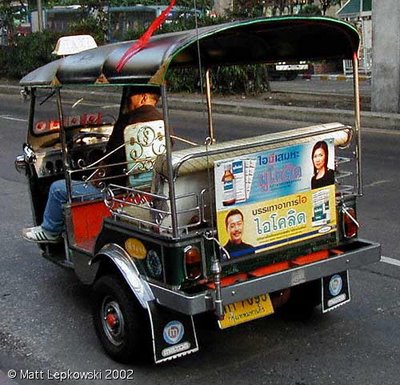 Radical constructivism
Radical constructivism..........I approached the old lady, smiled and looked at the foods keeping warm on her tiny gas burner. The chicken pieces looked tasty but no, probably not safe. I decided on a couple of what looked like tiny deep-fried meatballs. Somehow, with a combination of very bad Thai and waving hands I managed to pay for them. She laughed and said something to another woman huddled on the ground beside her, as I retreated to the safe anonymity of the crowded footpath. To my surprise the balls were very sweet and multilayered, not at all what I was expecting. Was that coconut?.........
 Social constructivism
Social constructivism........My feet were getting tired. I sat on a bench next to a couple of other travellers, and together we watched the motorbikes swarm like bees at the traffic lights. It turned out the dark guy was Canadian, and the girl Welsh. "Do you know where the main palace is?", I asked them, not knowing the name of it. "Sorry, no", said the guy, "we were going there ourselves. We know it's near the Democracy Monument." "The big pointy one?", I said, shaping it with my hands. "Yep, near the river.", the girl said. I knew where that was - I'd passed it leaving my hotel. "Let's go!", I said.............
 Cultural constructivism
Cultural constructivism.........We wandered among the walls of the ancient palace buildings, admiring intricate Buddhist murals and statues next to signs in English telling us not to touch things, not to graffiti, not take photos, not to eat food, not to sit etc. It was hard to tell if they wanted tourists here or not. Did they think we wanted to destroy the place? Perhaps they did. Perhaps we already had. I thought about the amount of signs advertising western products I'd seen, I thought about those herds of motorcycles eroding the quiet temples with their exhaust. .......

 Critical constructivism
Critical constructivism........Later, walking back to the hotel, I thought about the conference starting the next day. My paper about new technologies was starting to feel wrong, but I couldn't quite put my finger on it. What right did I have coming to Thailand and telling them what they should do to be like us?........
 Constructionism
Constructionism......I got back to my room and read my paper again. No, it was all wrong. I spent an hour or so working on it, but still couldn't get it right. By the bed was a postcard I'd bought at the palace. I stared at the picture for a while, then turned it over and started writing to Sarah, telling her about my walk there that afternoon. Suddenly, I knew what I should do at the conference. I reached for my laptop and started jotting ideas.........
 CONCLUSIONS
CONCLUSIONS.......Constructivism has been said to be post-epistemological, meaning that it is not another epistemology, or a way of knowing. It can not replace objectivism. Rather, constructivism is a way of thinking about knowing, a referent for building models of teaching, learning and curriculum (Tobin and Tippin, 1993). In this sense it is a philosophy.
Constructivism also can be used to indicate a theory of communication. When you send a message by saying something or providing information, and you have no knowledge of the receiver, then you have no idea as to what message was received, and you can not unambiguously interpret the response.
Some of the tenets of constructivism in pedagogical terms:
Students come to class with an established world-view, formed by years of prior experience and learning.
Even as it evolves, a student's world-view filters all experiences and affects their interpretation of observations.
For students to change their world-view requires work.
Students learn from each other as well as the teacher.
Students learn better by doing.
Allowing and creating opportunities for all to have a voice promotes the construction of new ideas.
A constructivist perspective views learners as actively engaged in making meaning, and teaching with that approach looks for what students can analyse, investigate, collaborate, share, build and generate based on what they already know, rather than what facts, skills, and processes they can parrot. To do this effectively, a teacher needs to be a learner and a researcher, to strive for greater awareness of the environments and the participants in a given teaching situation in order to continually adjust their actions to engage students in learning, using constructivism as a reference.
 REFLECTION
REFLECTION.....I wrote about my experiences in Bangkok.
 REFERENCES
REFERENCESby Martin Dougiamas
@
DOUGIAMAS.COM



